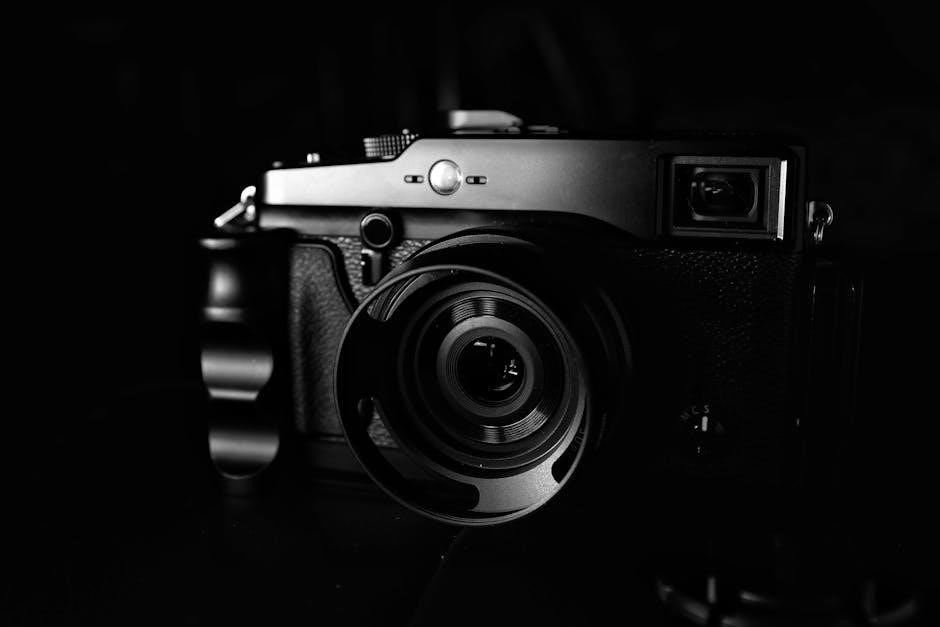x air 18 manual
Welcome to the X Air 18 manual‚ your comprehensive guide to mastering the powerful 18-channel digital mixer. Designed for iPad and Android tablets‚ it offers professional-grade mixing tools‚ wireless control‚ and studio-quality effects‚ perfect for live sound and recording applications.
1.1 Overview of the X Air 18 Mixer
The X Air 18 Mixer is an 18-channel‚ 12-bus digital mixing console designed for iPad and Android tablets. It combines professional-grade Midas preamps‚ integrated Wi-Fi‚ and a USB audio interface. With its compact‚ portable design‚ it offers wireless control via the X Air Edit app‚ making it ideal for live sound‚ recording‚ and installations. Its intuitive interface and robust feature set deliver exceptional audio quality and flexibility for various applications.
1.2 Key Features of the X Air 18
The X Air 18 features 16 MIDAS preamps‚ 6 mute groups‚ and 4 stereo FX processors. It supports 18×18 USB recording and wireless control via the X Air Edit app. With an intuitive interface‚ it includes programmable faders‚ RTA‚ and DAW control. Its robust design and versatile connectivity make it suitable for live performances and studio applications‚ ensuring high-quality audio processing and seamless integration with external devices.
System Requirements and Compatibility
The X Air 18 is compatible with iPad and Android tablets‚ requiring specific operating systems for optimal performance. Ensuring proper network connectivity and USB interface functionality is crucial for seamless operation.
2.1 Compatible Tablets and Devices
The X Air 18 is designed for seamless integration with iPad and Android tablets‚ ensuring optimal performance. Compatible devices include iPads running iOS 11 or later and Android tablets with Android 5.0 or higher. These tablets must support USB OTG for direct connection and have sufficient processing power to handle the X Air Edit app. Proper compatibility ensures reliable wireless control and efficient mixing operations.
2.2 Operating System Requirements
The X Air 18 requires iOS 11 or later for iPad and Android 5;0 or higher for tablets. Ensure your device supports USB OTG for proper connection. The X Air Edit app operates seamlessly on these systems‚ providing reliable control. Regular OS updates are recommended for optimal functionality and performance.
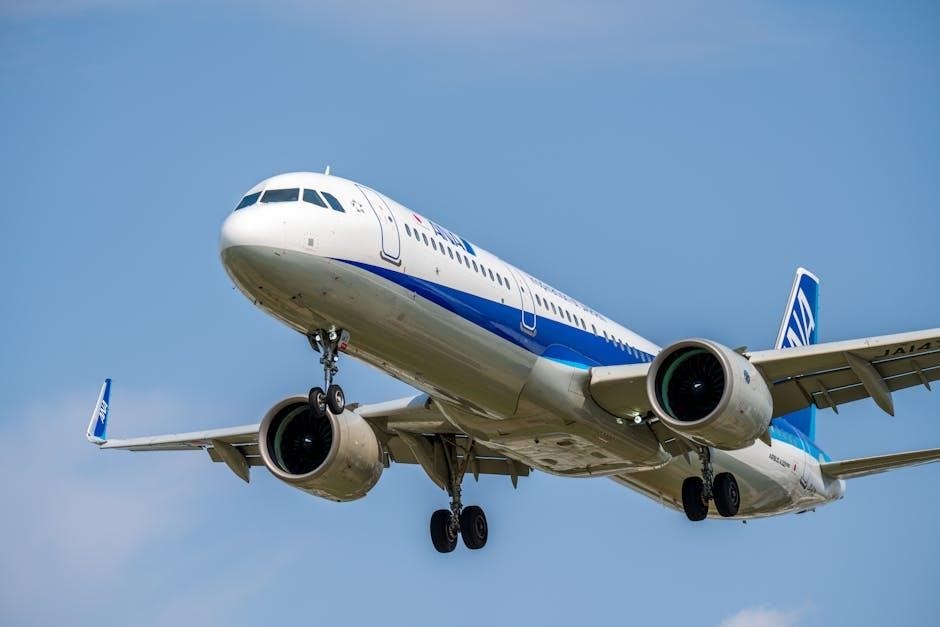
Unboxing and Hardware Overview
The X Air 18 includes the mixer‚ power cable‚ USB cable‚ and quick start guide. Its robust design features 18 input channels‚ Midas preamps‚ and Ultranet port for MIDI control.
3.1 What’s Included in the Box
Inside the box‚ you’ll find the X Air 18 mixer‚ a power cable‚ USB cable‚ and a quick start guide. Additional accessories may include a ULTRANET cable for MIDI control and a tablet stand for convenient operation. Ensure all items are accounted for before setup. The mixer is ready to connect to your iPad or Android device‚ with built-in effects and preamps for professional-grade audio processing.
3.2 Physical Layout and Controls
The X Air 18 mixer features a sleek‚ durable design with a clear LCD display for easy navigation. Its intuitive layout includes 18 channel strips‚ each with a fader‚ Mute‚ and Solo buttons. The encoder knob allows quick access to settings‚ while the USB port enables direct connectivity. Built with high-quality preamps and robust construction‚ it’s designed for both live and studio use‚ offering professional-grade audio processing in a compact form.

Setting Up the X Air 18
Setting up the X Air 18 is straightforward. Unbox‚ connect your devices‚ and power on. Follow the quick start guide for a seamless setup experience.
4.1 Connecting the Mixer to Your Tablet
To connect the X Air 18 to your tablet‚ start by powering on the mixer. Use a USB cable to link the mixer to your device. Download and install the X Air Edit app from the App Store or Google Play; Ensure your tablet and mixer are on the same network. Open the app‚ select the mixer from the available devices‚ and follow the prompts to establish a secure connection. This setup enables wireless control for seamless mixing operations.
4.2 Network Configuration for Wireless Control
For wireless control‚ connect your tablet to the X Air 18’s integrated Wi-Fi network. Open your device’s Wi-Fi settings‚ select the mixer’s network name‚ and enter the password (found in the mixer’s settings). Ensure both devices are on the same network; Once connected‚ launch the X Air Edit app and select the mixer from the device list. A stable network connection is crucial for reliable wireless operation and real-time control of the mixer’s functions.
4.3 Updating Firmware
To update the X Air 18 firmware‚ access the X Air Edit software and navigate to the setup/connection page. Select the mixer from the device list and download the latest firmware from the official Music Tribe website. Ensure your mixer is connected to a stable network. Once the update is complete‚ restart the mixer to apply the changes. Regular firmware updates ensure optimal performance and access to the latest features.
User Interface and Navigation
The X Air 18 features an intuitive touch-friendly interface designed for seamless control via tablets. The main screen provides clear access to channel strips‚ effects‚ and routing options.
5.1 Main Screen Layout
The main screen of the X Air 18 interface is divided into logical sections for efficient workflow. At the top‚ you’ll find transport controls and system status indicators. Below‚ the channel strip section displays individual channel levels‚ mute‚ and solo buttons. To the right‚ a detailed channel view provides EQ‚ compression‚ and effects parameters. The bottom panel offers a master fader and metering for the main output. This layout ensures quick access to essential functions‚ enhancing productivity during live mixing or studio recording sessions. The interface is touch-friendly‚ making it easy to adjust settings with precision using your tablet’s screen.
5.2 Navigating the X Air Edit Software
Navigating the X Air Edit software is intuitive‚ with a clear‚ touch-friendly interface optimized for tablets. The home screen provides quick access to key functions like channel strips‚ effects‚ and routing. Swipe gestures allow seamless switching between views‚ while pinch-to-zoom enables precise adjustments. The software’s workflow is designed to minimize distractions‚ ensuring focus on mixing. Customizable layouts and shortcuts further enhance efficiency‚ making it easy to adapt the interface to your mixing style and preferences for a smooth‚ professional experience.
Audio Routing and Signal Flow
The X Air 18 offers flexible audio routing and signal flow‚ enabling precise control over input channels‚ processing‚ and output configurations. This ensures optimal sound quality and versatility.
6.1 Input Channels and Their Configuration
The X Air 18 features 18 input channels‚ each equipped with MIDAS preamps for pristine audio quality. Channels can be configured to accommodate microphones‚ instruments‚ or line-level sources. Gain staging‚ phantom power‚ and signal routing are easily adjustable via the intuitive interface. Additionally‚ each channel offers a 4-band parametric EQ and compression for precise tone shaping. This flexibility ensures tailored sound reproduction for any application.
6.2 Bus and Main Output Routing
The X Air 18 offers 12 buses‚ including 6 subgroup buses‚ 4 auxiliary buses‚ and 2 matrix buses‚ allowing flexible signal routing. Channels can be assigned to buses for subgrouping or creating custom mixes. The main output routing provides options for sending signals to the main LR bus or external processors. Adjust levels‚ panning‚ and muting for each bus. This setup ensures precise control over signal distribution for live sound‚ monitoring‚ or recording applications.

Configuring Effects and Processing
The X Air 18 features built-in effects like reverb‚ delay‚ and compression. Users can assign effects to individual channels or buses‚ allowing precise control over sound shaping and enhancement.
7.1 Built-In Effects and Processors
The X Air 18 is equipped with a suite of professional-grade effects‚ including reverb‚ delay‚ chorus‚ and compression. These effects are accessible via the X Air Edit app‚ allowing for real-time adjustments. Each effect processor offers multiple presets and customizable parameters‚ enabling users to tailor their sound to suit various mixing scenarios. The internal effects processing enhances audio quality without external hardware‚ making it ideal for both live and studio applications.
7.2 Assigning Effects to Channels
To assign effects to channels on the X Air 18‚ navigate to the effects section within the X Air Edit app. Select the desired effect from the available options‚ such as reverb or delay‚ and assign it to individual channels or groups. Each channel can have multiple effects‚ allowing for layered sound shaping. Adjust effect levels and parameters to tailor the sound to your needs. This feature enhances flexibility for both live mixing and studio recording applications.
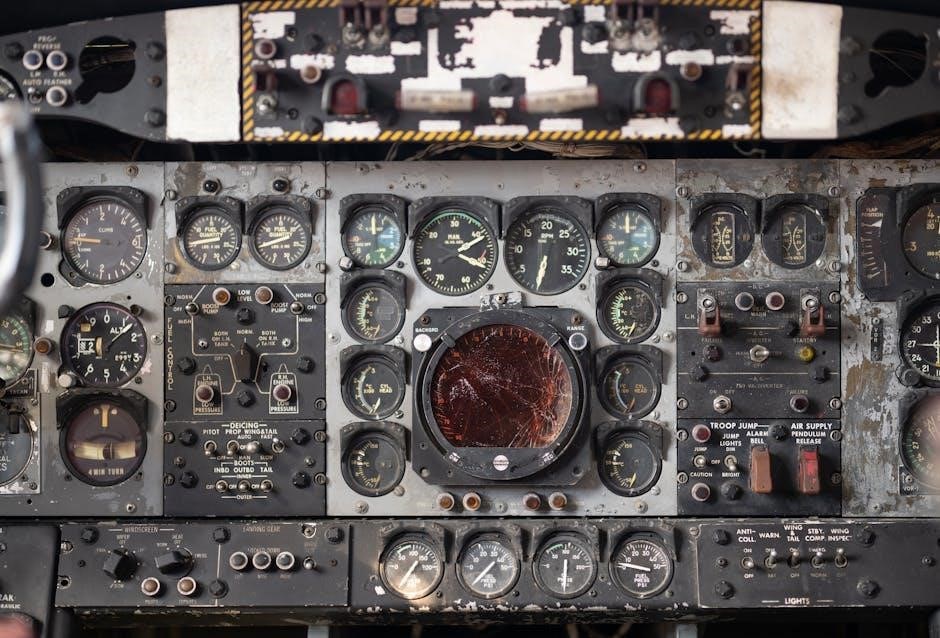
Recording and Playback
This section covers recording and playback using the X Air 18’s USB audio interface and external DAW integration‚ ensuring high-quality audio capture for live and studio applications.
8.1 Using the USB Audio Interface
The X Air 18’s USB audio interface allows for seamless recording directly to your computer. Connect via USB to enable 18×18 channels of high-quality audio transfer. This feature is ideal for capturing live performances or studio sessions. The interface is compatible with most DAWs‚ ensuring easy integration into your workflow. For optimal performance‚ use a high-speed USB cable and install the latest drivers from the Behringer website.
8.2 Recording to an External DAW
Connect the X Air 18 to your computer via USB to route audio to your preferred DAW. Configure the USB audio interface in your DAW settings‚ ensuring proper input and output routing. Set the buffer size for optimal performance. Route the main mix or individual tracks to the USB output for recording. This setup allows for professional-grade multitrack capture‚ ideal for live performances or studio productions. Adjust settings as needed to minimize latency and ensure seamless recording.
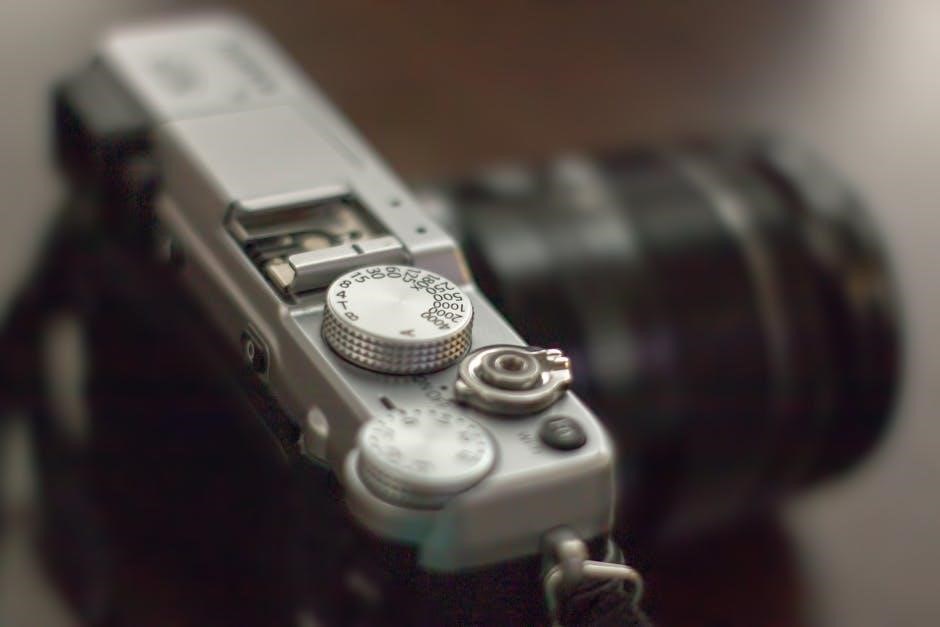
Remote Control via X Air Edit App
Use the X Air Edit app for wireless control of the X Air 18‚ enabling real-time monitoring‚ effects adjustment‚ and full mixer operation from your tablet or smartphone.
9.1 Downloading and Installing the App
To control the X Air 18 remotely‚ download the X Air Edit app from the Behringer website or your device’s app store. Ensure your tablet or smartphone meets the system requirements for compatibility. Once downloaded‚ install the app and launch it to connect to your mixer. Refer to the app’s setup guide for detailed installation steps and network configuration. This ensures seamless wireless control of your X Air 18 mixer.
9.2 Controlling the Mixer Remotely
Launch the X Air Edit app and connect to your mixer via Wi-Fi. The app mirrors the mixer’s interface‚ allowing you to adjust levels‚ EQ‚ and effects from your device. Use the faders to control channel levels and navigate through scenes and presets. The remote control enables real-time monitoring and adjustments‚ ensuring precise mixing capabilities. This feature enhances flexibility during live performances or studio sessions by providing wireless access to all mixer functions.
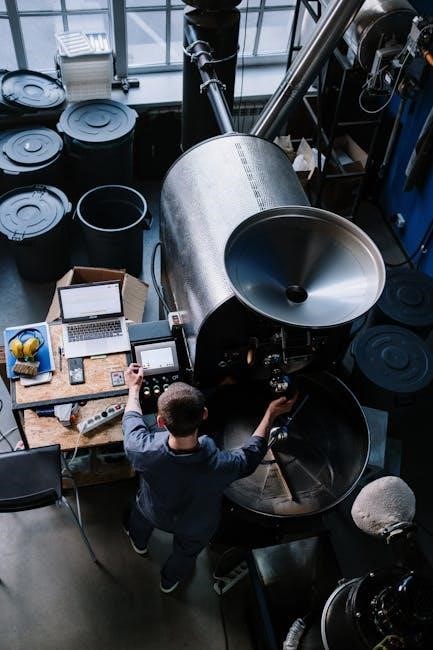
Troubleshooting Common Issues
Identify common issues like network connectivity problems or audio dropouts. Check cable connections‚ restart devices‚ and ensure firmware is updated. Refer to specific troubleshooting sections for detailed solutions.
10.1 Resolving Network Connectivity Problems
Ensure the mixer and tablet are on the same network. Restart both devices and check Wi-Fi settings. Update firmware if necessary. Weak signal strength or outdated drivers can cause issues. Reset network configurations or factory settings as a last resort. Consult the manual for detailed steps to restore connectivity and stabilize wireless control.
10.2 Fixing Audio Dropout or Latency
Adjust buffer settings in the X Air Edit app to optimize audio performance. Ensure stable network connection and minimize wireless interference. Restart the mixer and tablet‚ and update firmware if necessary. Check for conflicting apps or background processes on your device. If issues persist‚ reset audio settings to default or reinstall the X Air Edit app to restore smooth operation.
Maintenance and Care
Regularly clean the mixer with a soft cloth and avoid exposure to moisture. Store in a cool‚ dry place to protect internal components and ensure optimal performance.
11.1 Cleaning the Mixer
Regularly clean the X Air 18 to prevent dust buildup and maintain performance. Use a soft‚ dry cloth to wipe the surface and controls. Avoid moisture or harsh chemicals‚ as they may damage the finish or harm internal components. For stubborn stains‚ lightly dampen the cloth with water‚ but ensure no liquid seeps into the mixer. Never spray cleaning products directly on the device. Allow the mixer to air dry completely before use.
11.2 Storing the Mixer Properly
To ensure long-term functionality‚ store the X Air 18 in a cool‚ dry environment‚ away from direct sunlight and moisture. Use the original packaging or a sturdy case to protect it from physical damage. Avoid extreme temperatures and humidity‚ as these can harm internal components. Keep the mixer clean and dry before storing. Disconnect all cables to prevent damage or corrosion. Store in an upright position to maintain balance and prevent scratching the surface.

Compatibility with Other Devices
The X Air 18 is compatible with MIDI controllers for custom control and external effects processors for enhanced audio processing‚ ensuring versatile integration with various devices via USB and wireless connections for flexible workflows.
12.1 Using the X Air 18 with MIDI Controllers
The X Air 18 seamlessly integrates with MIDI controllers‚ allowing for customizable control of faders‚ mutes‚ and effects. Assign MIDI channels in the X Air Edit app to map physical controls to virtual functions‚ enabling precise real-time adjustments during performances. This feature enhances workflow efficiency and offers advanced control over the mixer’s operations‚ making it ideal for live sound engineers and musicians seeking enhanced creativity and flexibility in their setups.
12.2 Integrating with External Effects Processors
The X Air 18 supports seamless integration with external effects processors‚ offering enhanced audio processing capabilities. Connect processors via auxiliary sends and returns or use the USB interface for digital signal routing. This flexibility allows for incorporating high-quality outboard gear‚ enriching your mixes with specialized effects. Configure external effects within the X Air Edit app to optimize signal flow and achieve professional-grade sound processing tailored to your needs.
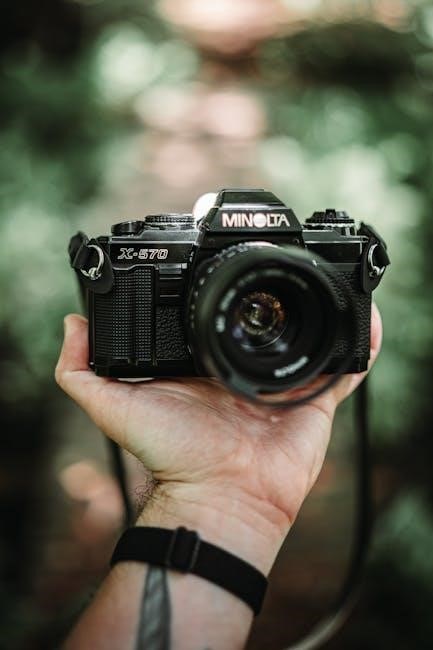
Advanced Features and Customization
Explore advanced customization options‚ including custom scenes‚ MIDI control‚ and personalized effects configurations‚ allowing for tailored workflows and enhanced creative control over your mixing experience.
13.1 Creating Custom Scenes and Presets
The X Air 18 allows you to create and save custom scenes and presets‚ enabling quick recall of specific mixer configurations. Access this feature via the X Air Edit app‚ where you can organize scenes into folders for easy management. Custom scenes are ideal for different performances or venues‚ ensuring consistent sound quality. Presets can also be tailored for individual channels or effects‚ streamlining your workflow and enhancing productivity during live performances or studio sessions.
13.2 Configuring MIDI Control
The X Air 18 supports MIDI control‚ enabling integration with external controllers and DAWs. To configure MIDI‚ access the MIDI control section in the X Air Edit app. Assign MIDI commands to faders‚ mutes‚ and effects for seamless control. This feature enhances live performances and studio workflows by allowing external devices to interact with the mixer. Customize MIDI mappings to suit your setup‚ ensuring efficient operation and precise control over your audio environment.

Customer Support and Resources
For assistance‚ contact Behringer support directly or visit their official website. Explore online forums and communities for troubleshooting and user discussions. Access manuals and guides for detailed support.
14.1 Contacting Behringer Support
To reach Behringer support‚ visit their official website and navigate to the support section. Use the contact form‚ phone‚ or email provided for assistance. For urgent inquiries‚ live chat is available. Ensure to have your product serial number ready for faster service. Additionally‚ the website offers a service portal for repair requests and access to FAQs and troubleshooting guides for common issues.
14.2 Online Forums and Communities
Engage with online forums and communities dedicated to the X Air series. Websites like the official Behringer forum‚ Facebook groups‚ and Reddit offer valuable resources‚ troubleshooting tips‚ and user experiences. These platforms allow you to connect with other X Air 18 users‚ share knowledge‚ and learn from experts. Active participation in these communities can enhance your understanding and help you optimize the mixer’s performance for your specific needs.
Thank you for completing the X Air 18 manual. This mixer offers exceptional versatility for live sound and studio recording‚ with its high-quality preamps and wireless control. Explore advanced features like custom scenes and MIDI integration to elevate your audio production. Join online communities to share experiences and optimize your setup.
15.1 Final Tips for Getting the Most Out of the X Air 18
Regularly update your firmware to access the latest features and improvements. Experiment with custom scenes and effects to tailor your sound. Organize your channels and buses for efficient mixing. Utilize MIDI control for seamless integration with external devices. Backup your configurations frequently to avoid losing important settings. Explore online communities for inspiration and troubleshooting tips to maximize your X Air 18 experience.
